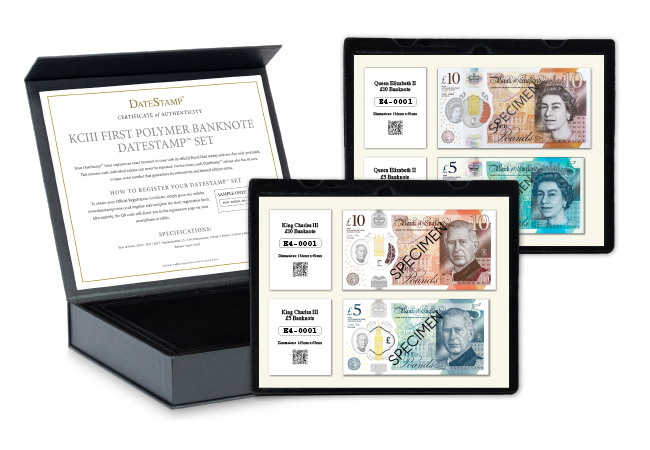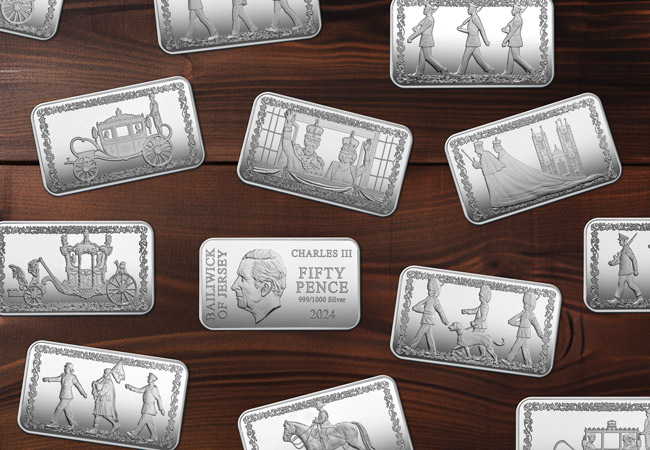Her Majesty the Queen
The Evolution of UK Banknotes: From Paper to Precision
The history of banknotes in the United Kingdom is a fascinating journey of innovation, security, and tradition. From the earliest issues to the forthcoming King Charles III banknotes, each phase reflects the technological and cultural shifts of its time.
A Brief History of UK Banknotes
The Bank of England began issuing banknotes shortly after its establishment in 1694. Initially, these notes were handwritten, a far cry from the highly sophisticated currency we use today. By the mid-18th century, partially printed notes were introduced, with the denomination and other details filled in by hand.
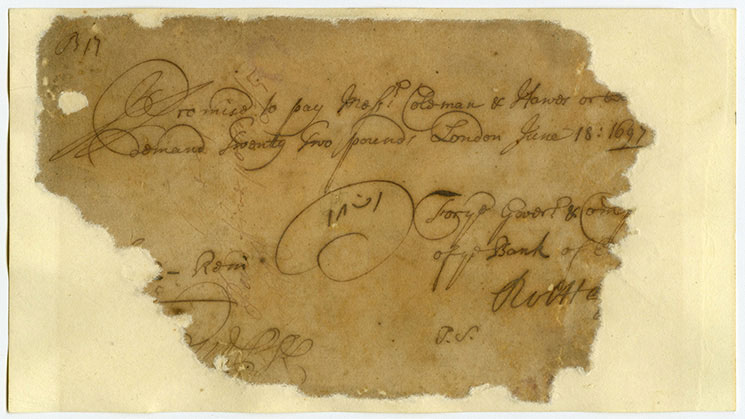
Source: Bank of England website
https://www.bankofengland.co.uk/museum/online-collections/blog/our-earliest-bank-of-england-note
The 19th century brought significant changes with fully printed notes and the introduction of standardized designs to prevent forgery. A pivotal moment in the history of UK banknotes came in 1960 when Queen Elizabeth II became the first monarch to be featured on the Bank of England notes. Her portrait on the £1 note marked the beginning of a tradition of depicting reigning monarchs on the nation’s currency, providing a sense of continuity and national identity.
Security Features: From Simplicity to Sophistication
As technology advanced, so did the sophistication of banknote security features. Early notes relied heavily on the quality of the paper and intricate designs to deter counterfeiters. However, as counterfeiting techniques improved, so too did the security measures.
Modern UK banknotes are a marvel of technology and design. Click on the dots below to explore the key security features:
Introducing the King Charles III Banknotes
In a historic move, the Bank of England is set to release the new King Charles III banknotes on June 5th, 2024. This marks the first time in over 70 years that a new monarch’s portrait will grace the currency, following the reign of Queen Elizabeth II.
The King Charles III banknotes will continue to feature the same high-security features of their predecessors and the new banknotes will initially be available in £5, £10, £20, and £50 denominations. They will circulate alongside the existing Queen Elizabeth II notes, gradually phasing out the older series as they wear out.
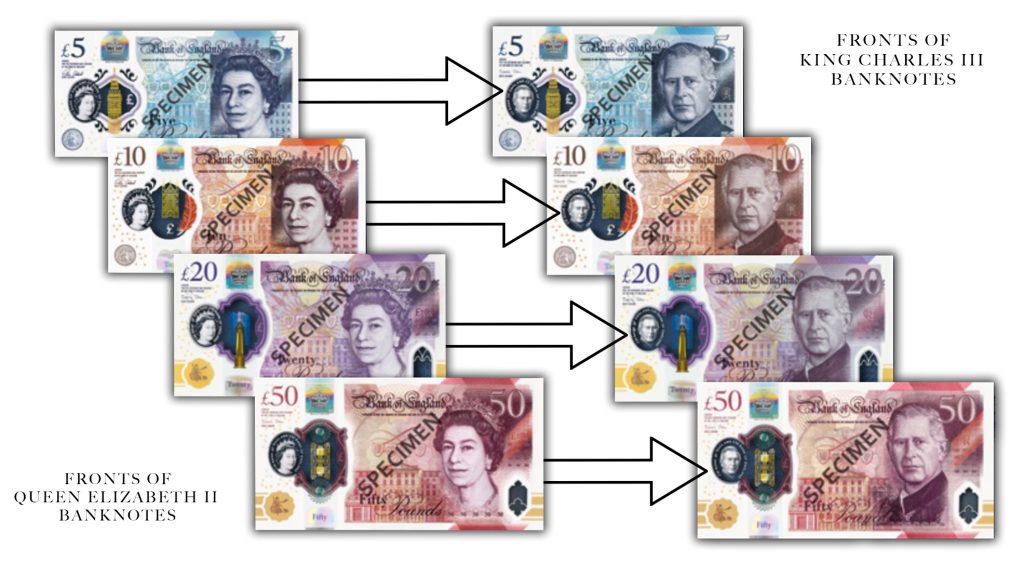
Introducing the DateStamp™ Set: Connecting the Past and Present
To commemorate this historic transition, we are excited to introduce an exclusive DateStamp™ set that brings together the past and the present of UK currency. This unique collection features the Queen Elizabeth II £5 and £10 banknotes alongside the brand new King Charles III £5 and £10 banknotes, each postmarked on the official issue date, 5th June, 2024.
You can now be one of just 2,024 collectors to own this special set.
Click here now to pre-order yours before the official release >>
One Year On: Five Facts About King Charles III’s Coronation Procession
One year has passed since the grandeur of King Charles III’s Coronation Procession swept through the streets of London, a momentous occasion that united the nation in celebration.
And as we reflect on King Charles III’s first year as King, let’s journey back to the splendour and spectacle of that unforgettable day.
Here are five facts about the impressive Coronation Procession:
It was the largest Ceremonial Military Operation in 70 years
The largest operation of its kind since Queen Elizabeth II’s Coronation Procession in 1953, two meticulously planned Processions accompanied King Charles III and Queen Camilla on the 1.42-mile route to and from Westminster Abbey.
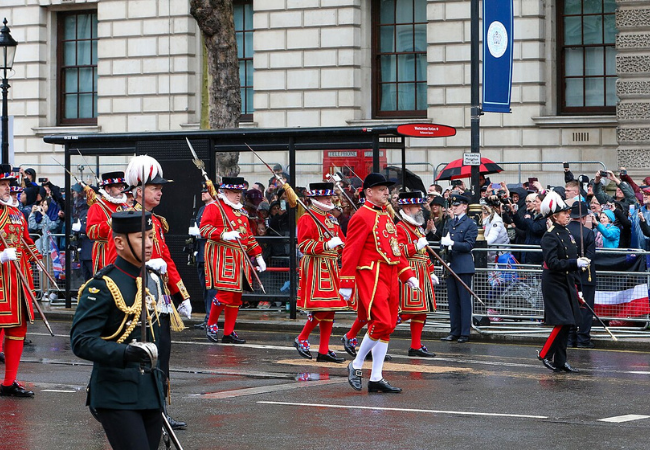
Image Credit: Katie Chan, CC BY-SA 4.0 via Wikimedia Commons
Over 4,000 Servicemen and Women Took Part
Over 4,000 Armed Forces Personnel from at least 35 Commonwealth nations marched alongside Their Majesties during the Procession, this included representatives from The British Army, The Royal Air Force, The Royal Navy, The Royal Marines, The Household Division and The Royal Canadian Mounted Police.

Image Credit: Katie Chan, CC BY-SA 4.0 via Wikimedia Commons
A Coronation First Took Place at Buckingham Palace
For the first time, the Procession formed up in the gardens of Buckingham Palace to give a Royal Salute and three cheers to the new King and Queen. King Charles III and Queen Camilla stepped out onto the West Terrace of the Palace to receive the salute.
The Coronation Flypast Had To Be Altered Again
The famous Buckingham Palace Balcony Appearance was due to be accompanied by a spectacular six-minute flypast including more than 60 aircraft, but the plans were scaled back due to the poor weather forecast. This also happened in 1953 as Queen Elizabeth II’s Coronation Flypast also had to be altered on the day due to poor weather conditions.
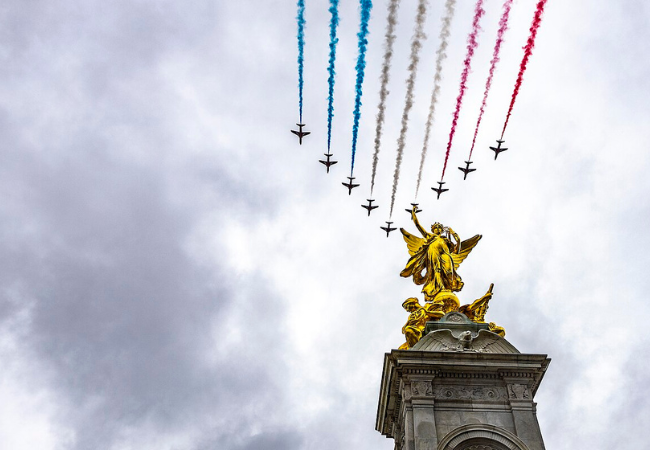
Image Credit: Ministry of Defence, OGL 3 via Wikimedia Commons
The Gold State Coach isn’t as comfortable as it may look
Their Royal Majesties travelled to the Abbey in Queen Elizabeth II’s Diamond Jubilee State Coach and once crowned, returned to Buckingham Palace in the ornate Gold State Coach.
Queen Elizabeth II, who used the coach for her Coronation, said that the Coach might look luxurious but it was an uncomfortable ride due to the lack of suspension!
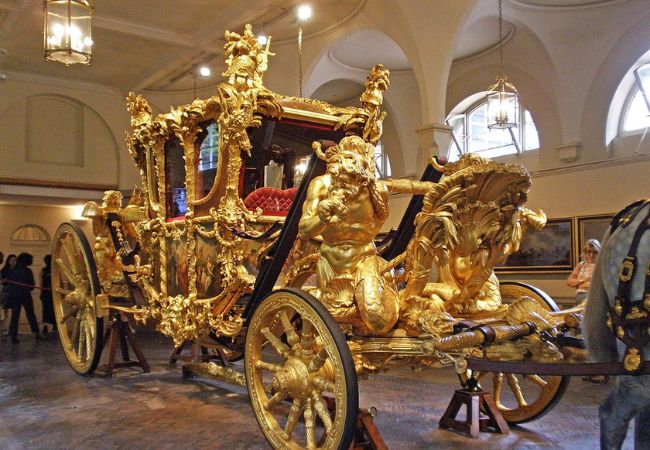
Image Credit: Amanda Slater, CC BY-SA 2.0 via Wikimedia Commons
Other members of The Royal Family followed in the Australian State Coach, the Irish State Coach and the Scottish State Coach. Princess Anne rode behind the Golden State Coach on horseback as with His Majesty’s Guards.
The Ultimate Tribute To King Charles III’s Coronation Procession
Today you can own the ultimate tribute to our nation’s FIRST Coronation in OVER 70 years – The King Charles III Coronation Silver 50p Coin Bar for JUST £9.99 (+p&p) when you trial the King’s Coronation Procession Collection.
This is an extra special specification. Each coin in the collection has been carefully struck from 99.9% Pure Silver to a pristine Proof finish and despite being struck to a rectangular shape – it still carries a fifty pence denomination!
Continue collecting and you’ll build an enviable collection of stunning Silver 50ps featuring scenes taken straight from the Coronation Day!
And what’s more, each coin has been fully approved by His Majesty King Charles III himself!
Click here to secure yours for our introductory price of JUST £9.99 (+p&p) >>
The UK’s NEW Coinage
The coins that we use every day are changing.
From the 1p to the £2, eight new coins will soon be entering our pockets and our piggy banks.
So, as we welcome the new era of King Charles III, both the ‘heads’ and ‘tails’ of our circulating coins will have brand new designs.
Read on to unveil The Royal Mint’s brand-new designs, learn about the history of Definitive coins and why this is the biggest change for British coins in 15 years…
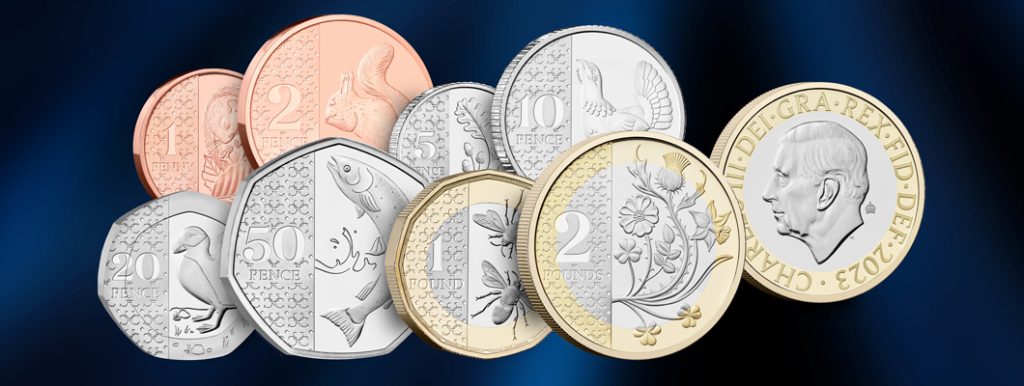
The Coins of a New ‘Carolean’ Era
The coins, each designed by The Royal Mint, have been authorised by HM treasury and approved by King Charles III himself.
Over the past seven decades, our circulating coinage has undergone many changes, showcasing five different portraits of Her Majesty Queen Elizabeth II on the obverse, and two distinct reverse designs.
And even though we have seen His Majesty’s effigy on the obverse of several commemorative issues, this will be the first time we’ll see his portrait on the coins we find in our everyday change.
All reverse designs share a unique feature, setting each denomination against a stylised logo with 3 interlocking ‘Cs’, representing King Charles III.
Before they gradually enter circulation, The Royal Mint have introduced the first strike of these coins in commemorative quality – with a special Privy Mark…
Inspired by Our Natural World
What’s more, each coin embodies King Charles III’s passion for nature & sustainability, presenting various symbols of Britain’s vast wildlife on the reverse designs. Having been a Patron of The Wildlife Trust since 1977, Charles’ affiliation for the natural world was a key inspiration for the designs of the UK’s new coinage.
The new £2 coin design represents the union of the United Kingdom with intermingling flowers from the four nations of the UK: the Rose, the Thistle, the Daffodil, and the Shamrock.
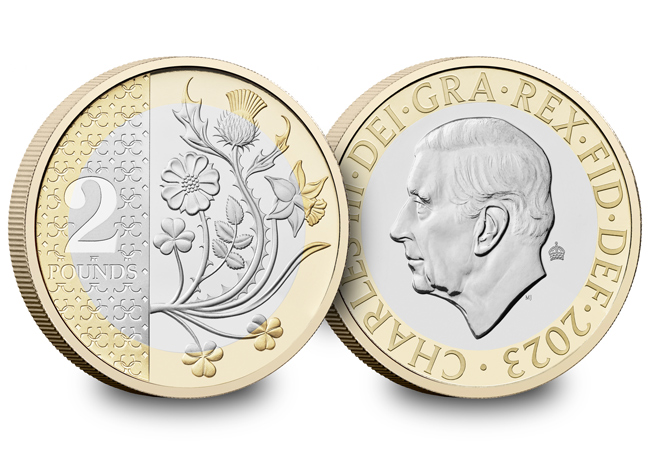
For the £1, 50p, 20p, 10p, 2p, and 1p, The Royal Mint have thoughtfully translated various wildlife creatures into innovative reverse designs.
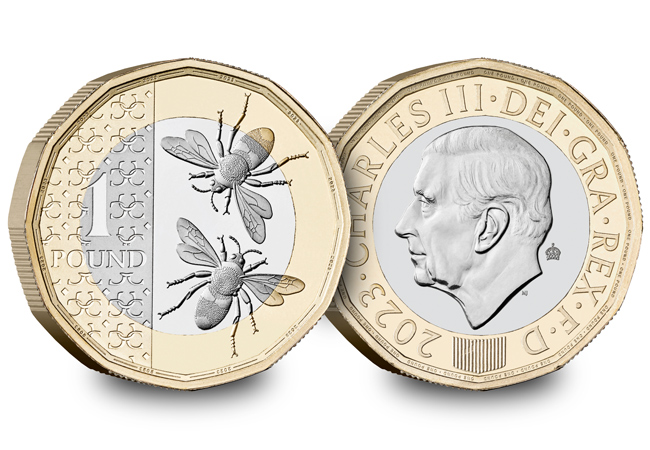
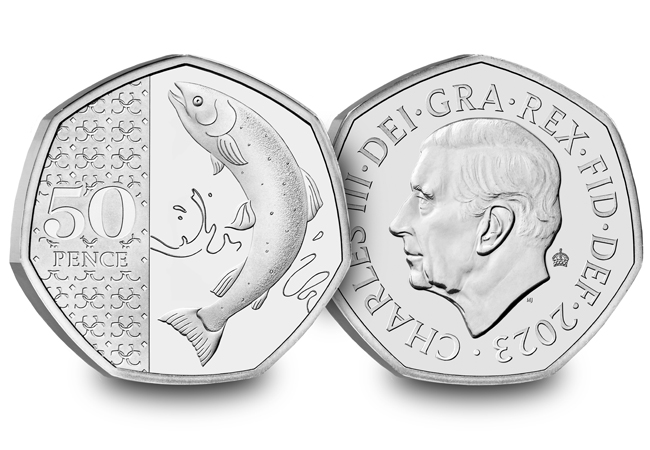
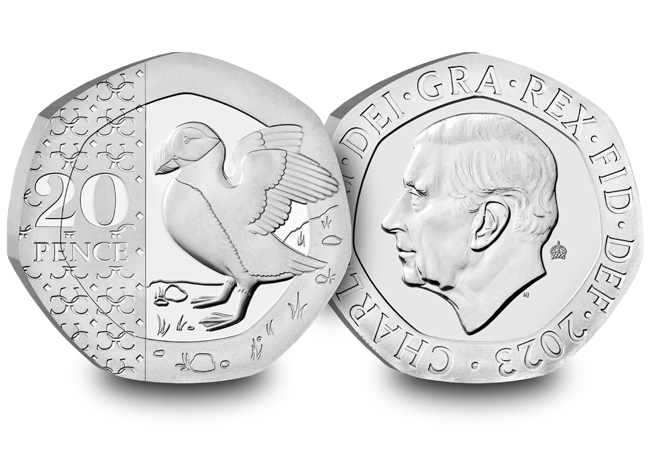
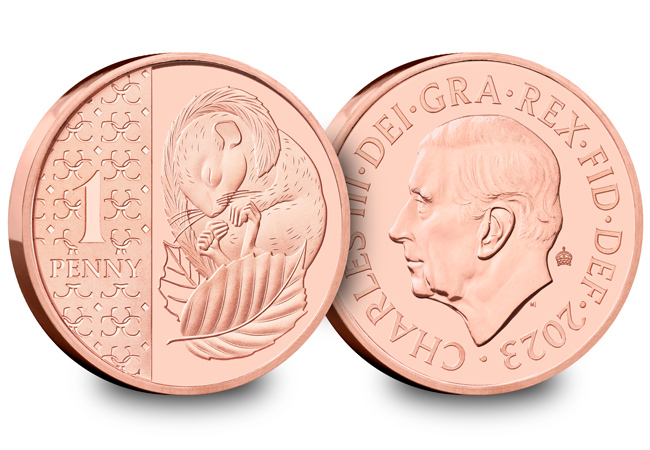
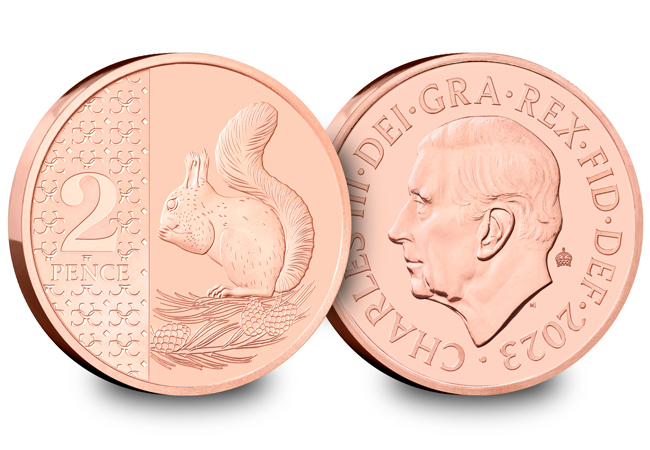
For example, the £1 coin presents a pair of Bees, the 50p showcases a Salmon in water, the 20p a Puffin, the 10p a Scottish Capercaillie, 2p a Red Squirrel, and the 1p a sleeping Dormouse.
Finally, the 5p coin features a stunning combination of oak leaves and acorns – a perfect tribute to our natural world and England’s national tree.
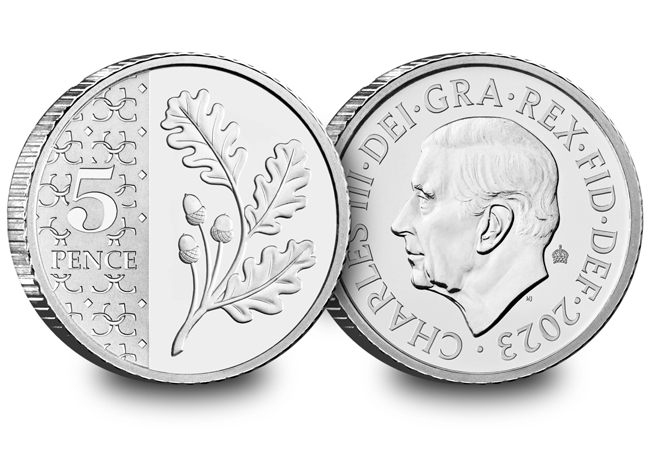
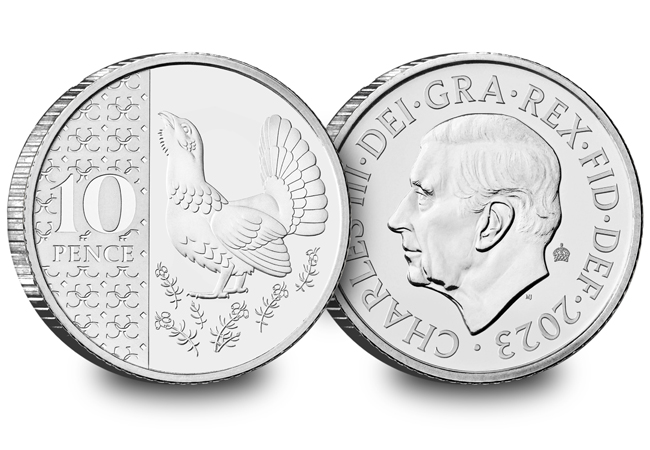
The History of ‘Definitive’ Coinage
The eight different coin denominations which make up our everyday change (1p, 2p, 5p, 10p, 20p, 50p, £1, £2) began circulating in 1971. This followed Britain’s shift towards Decimalisation, a plan which had been in the making for over 10 years.
Multiple artists participated in a private design competition, and among them was Christopher Ironside, the chosen designer of the decimal coins. Ironside’s designs remained on the reverse of the definitive coins for 40 years, until Matt Dent proposed the idea of spreading the Shield of the Royal Arms over the definitive coins in 2005.
“This piecing together of the elements of the Royal Arms to form one design had a satisfying symbolism – that of unity, four countries of Britain under a single monarch.” – Matt Dent
A Special Touch for Collectors…
The best part is, you can now secure the commemorative editions of the UK’s new coinage.
And in addition to new designs on both faces, these coins also feature a distinctive ‘Privy Mark’ on the obverse, a unique and sought-after element.
Designed to distinguish these coins from the ones you’ll eventually find in circulation, the first commemorative strikes display a delicate crown positioned alongside the effigy of His Majesty.
From the official Brilliant Uncirculated pack, to the prestigious Proof Set, or the strictly limited DateStampTM, you can click here to view the range with prices starting from £33 (+p&p) and secure yours before it’s too late >

